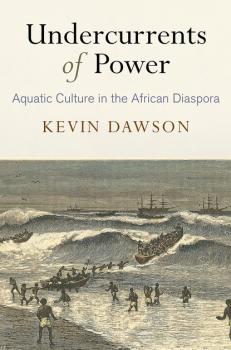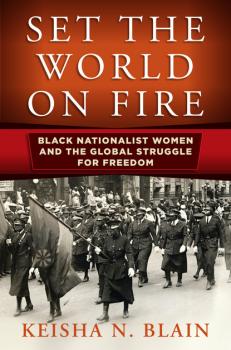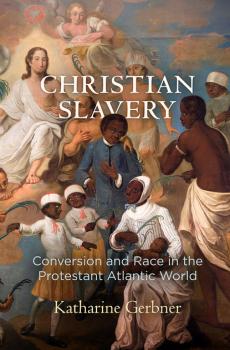Историческая литература
Различные книги в жанре Историческая литератураUndercurrents of Power
Long before the rise of New World slavery, West Africans were adept swimmers, divers, canoe makers, and canoeists. They lived along riverbanks, near lakes, or close to the ocean. In those waterways, they became proficient in diverse maritime skills, while incorporating water and aquatics into spiritual understandings of the world. Transported to the Americas, slaves carried with them these West African skills and cultural values. Indeed, according to Kevin Dawson's examination of water culture in the African diaspora, the aquatic abilities of people of African descent often surpassed those of Europeans and their descendants from the age of discovery until well into the nineteenth century. As Dawson argues, histories of slavery have largely chronicled the fields of the New World, whether tobacco, sugar, indigo, rice, or cotton. However, most plantations were located near waterways to facilitate the transportation of goods to market, and large numbers of agricultural slaves had ready access to water in which to sustain their abilities and interests. Swimming and canoeing provided respite from the monotony of agricultural bondage and brief moments of bodily privacy. In some instances, enslaved laborers exchanged their aquatic expertise for unique privileges, including wages, opportunities to work free of direct white supervision, and even in rare circumstances, freedom. Dawson builds his analysis around a discussion of African traditions and the ways in which similar traditions—swimming, diving, boat making, even surfing—emerged within African diasporic communities. Undercurrents of Power not only chronicles the experiences of enslaved maritime workers, but also traverses the waters of the Atlantic repeatedly to trace and untangle cultural and social traditions.
Set the World on Fire
In 1932, Mittie Maude Lena Gordon spoke to a crowd of black Chicagoans at the old Jack Johnson boxing ring, rallying their support for emigration to West Africa. In 1937, Celia Jane Allen traveled to Jim Crow Mississippi to organize rural black workers around black nationalist causes. In the late 1940s, from her home in Kingston, Jamaica, Amy Jacques Garvey launched an extensive letter-writing campaign to defend the Greater Liberia Bill, which would relocate 13 million black Americans to West Africa. Gordon, Allen, and Jacques Garvey—as well as Maymie De Mena, Ethel Collins, Amy Ashwood, and Ethel Waddell—are part of an overlooked and understudied group of black women who take center stage in Set the World on Fire , the first book to examine how black nationalist women engaged in national and global politics from the early twentieth century to the 1960s. Historians of the era generally portray the period between the Garvey movement of the 1920s and the Black Power movement of the 1960s as one of declining black nationalist activism, but Keisha N. Blain reframes the Great Depression, World War II, and the early Cold War as significant eras of black nationalist—and particularly, black nationalist women's—ferment. In Chicago, Harlem, and the Mississippi Delta, from Britain to Jamaica, these women built alliances with people of color around the globe, agitating for the rights and liberation of black people in the United States and across the African diaspora. As pragmatic activists, they employed multiple protest strategies and tactics, combined numerous religious and political ideologies, and forged unlikely alliances in their struggles for freedom. Drawing on a variety of previously untapped sources, including newspapers, government records, songs, and poetry, Set the World on Fire highlights the flexibility, adaptability, and experimentation of black women leaders who demanded equal recognition and participation in global civil society.
Risk and Ruin
At the time of its collapse in 2001, Enron was one of the largest companies in the world, boasting revenue of over $100 billion. During the 1990s economic boom, the Houston, Texas-based energy company had diversified into commodities and derivatives trading and many other ventures—some more legal than others. In the lead-up to Enron's demise, it was revealed that the company's financial success was sustained by a creatively planned and well-orchestrated accounting fraud. The story of Enron and its disastrous aftermath has since become a symbol of corporate excess and negligence, framed as an exceptional event in the annals of American business. With Risk and Ruin , Gavin Benke places Enron's fall within the larger history and culture of late twentieth-century American capitalism. In many ways, Benke argues, Enron was emblematic of the transitions that characterized the era. Like Enron, the American economy had shifted from old industry to the so-called knowledge economy, from goods to finance, and from national to global modes of production. Benke dives deep into the Enron archives, analyzing company newsletters, board meeting minutes, and courtroom transcriptions to chart several interconnected themes across Enron's history: the changing fortunes of Houston; the shifting attitudes toward business strategy, deregulation, and the function of the market among policy makers and business leaders; and the cultural context that accompanied and encouraged these broader political and economic changes. Considered against this backdrop, Enron takes on new significance as a potent reminder of the unaddressed issues still facing national and global economies. Published in cooperation with the William P. Clements Center for Southwest Studies at Southern Methodist University.
Suffering Scholars
As early as Aristotle's Problem XXX , intellectual superiority has been linked to melancholy. The association between sickness and genius continued to be a topic for discussion in the work of early modern writers, most recognizably in Robert Burton's The Anatomy of Melancholy . But it was not until the eighteenth century that the phenomenon known as the «suffering scholar» reached its apotheosis, a phenomenon illustrated by the popularity of works such as Samuel-Auguste Tissot's De la santé des gens de lettres , first published in 1768. Though hardly limited to French-speaking Europe, the link between mental endeavor and physical disorder was embraced with particular vigor there, as was the tendency to imbue intellectuals with an aura of otherness and detachment from the world. Intellectuals and artists were portrayed as peculiarly susceptible to altered states of health as well as psyche—the combination of mental intensity and somatic frailty proved both the privileges and the perils of knowledge-seeking and creative endeavor. In Suffering Scholars , Anne C. Vila focuses on the medical and literary dimensions of the cult of celebrity that developed around great intellectuals during the French Enlightenment. Beginning with Tissot's work, which launched a subgenre of health advice aimed specifically at scholars, she demonstrates how writers like Voltaire, Diderot, Rousseau, and Mme de Staël, responded to the «suffering scholar» syndrome and helped to shape it. She traces the ways in which this syndrome influenced the cultural perceptions of iconic personae such as the philosophe , the solitary genius, and the learned lady. By showing how crucial the so-called suffering scholar was to debates about the mind-body relation as well as to sex and sensibility, Vila sheds light on the consequences book-learning was thought to have on both the individual body and the body politic, not only in the eighteenth century but also into the decades following the Revolution.
God's Country
The United States is Israel's closest ally in the world. The fact is undeniable, and undeniably controversial, not least because it so often inspires conspiracy theorizing among those who refuse to believe that the special relationship serves America's strategic interests or places the United States on the right side of Israel's enduring conflict with the Palestinians. Some point to the nefarious influence of a powerful «Israel lobby» within the halls of Congress. Others detect the hand of evangelical Protestants who fervently support Israel for their own theological reasons. The underlying assumption of all such accounts is that America's support for Israel must flow from a mixture of collusion, manipulation, and ideologically driven foolishness. Samuel Goldman proposes another explanation. The political culture of the United States, he argues, has been marked from the very beginning by a Christian theology that views the American nation as deeply implicated in the historical fate of biblical Israel. God's Country is the first book to tell the complete story of Christian Zionism in American political and religious thought from the Puritans to 9/11. It identifies three sources of American Christian support for a Jewish state: covenant, or the idea of an ongoing relationship between God and the Jewish people; prophecy, or biblical predictions of return to The Promised Land; and cultural affinity, based on shared values and similar institutions. Combining original research with insights from the work of historians of American religion, Goldman crafts a provocative narrative that chronicles Americans' attachment to the State of Israel.
Colonial Complexions
In Colonial Complexions , historian Sharon Block examines how Anglo-Americans built racial ideologies out of descriptions of physical appearance. By analyzing more than 4,000 advertisements for fugitive servants and slaves in colonial newspapers alongside scores of transatlantic sources, she reveals how colonists transformed observable characteristics into racist reality. Building on her expertise in digital humanities, Block repurposes these well-known historical sources to newly highlight how daily language called race and identity into being before the rise of scientific racism. In the eighteenth century, a multitude of characteristics beyond skin color factored into racial assumptions, and complexion did not have a stable or singular meaning. Colonists justified a race-based slave labor system not by opposing black and white but by accumulating differences in the bodies they described: racism was made real by marking variation from a norm on some bodies, and variation as the norm on others. Such subtle systemizations of racism naturalized enslavement into bodily description, erased Native American heritage, and privileged life history as a crucial marker of free status only for people of European-based identities. Colonial Complexions suggests alternative possibilities to modern formulations of racial identities and offers a precise historical analysis of the beliefs behind evolving notions of race-based differences in North American history.
Unsettling the West
The revolutionary Ohio Valley is often depicted as a chaotic Hobbesian dystopia, in which Indians and colonists slaughtered each other at every turn. In Unsettling the West , Rob Harper overturns this familiar story. Rather than flailing in a morass, the peoples of the revolutionary Ohio Valley actively and persistently sought to establish a new political order that would affirm their land claims, protect them against attack, and promote trade. According to Harper, their efforts repeatedly failed less because of racial antipathy or inexorable competition for land than because of specific state policies that demanded Indian dispossession, encouraged rapid colonization, and mobilized men for war. Unsettling the West demonstrates that government policies profoundly unsettled the Ohio Valley, even as effective authority remained elusive. Far from indifferent to states, both Indians and colonists sought government allies to aid them in both intra- and intercultural conflicts. Rather than spreading uncontrollably across the landscape, colonists occupied new areas when changing policies, often unintentionally, gave them added incentives to do so. Sporadic killings escalated into massacre and war only when militants gained access to government resources. Amid the resulting upheaval, Indians and colonists sought to preserve local autonomy by forging relationships with eastern governments. Ironically, these local pursuits of order ultimately bolstered state power. Following scholars of European and Latin American history, Harper extends the study of mass violence beyond immediate motives to the structural and institutional factors that make large-scale killing possible. The Ohio Valley's transformation, he shows, echoed the experience of early modern and colonial state formation around the world. His attention to the relationships between violence, colonization, and state building connects the study of revolutionary America to a vibrant literature on settler colonialism.
Christian Slavery
Could slaves become Christian? If so, did their conversion lead to freedom? If not, then how could perpetual enslavement be justified? In Christian Slavery , Katharine Gerbner contends that religion was fundamental to the development of both slavery and race in the Protestant Atlantic world. Slave owners in the Caribbean and elsewhere established governments and legal codes based on an ideology of «Protestant Supremacy,» which excluded the majority of enslaved men and women from Christian communities. For slaveholders, Christianity was a sign of freedom, and most believed that slaves should not be eligible for conversion. When Protestant missionaries arrived in the plantation colonies intending to convert enslaved Africans to Christianity in the 1670s, they were appalled that most slave owners rejected the prospect of slave conversion. Slaveholders regularly attacked missionaries, both verbally and physically, and blamed the evangelizing newcomers for slave rebellions. In response, Quaker, Anglican, and Moravian missionaries articulated a vision of «Christian Slavery,» arguing that Christianity would make slaves hardworking and loyal. Over time, missionaries increasingly used the language of race to support their arguments for slave conversion. Enslaved Christians, meanwhile, developed an alternate vision of Protestantism that linked religious conversion to literacy and freedom. Christian Slavery shows how the contentions between slave owners, enslaved people, and missionaries transformed the practice of Protestantism and the language of race in the early modern Atlantic world.
Mother and Sons, Inc.
In the late 1320s, Martha de Cabanis was widowed with three young sons, eleven, eight, and four years of age. Her challenges would be many: to raise and train her children to carry on their father's business; to preserve that business until they were ready to take over; and to look after her own financial well-being. Examining the visible trail Martha left in Montpellier's notarial registers and other records, Kathryn L. Reyerson reveals a wealth of information about her activities, particularly in the area of business, commerce, and real estate. From these formal, contractual documents, Reyerson gleans something of Martha's personality and reconstructs what she may have done, and a good deal of what she actually did, in her various roles of daughter, wife, mother, and widow. Mother and Sons, Inc. demonstrates that while women were hardly equal to men in the fourteenth century, under the right conditions afforded by wealth and the status of widowhood, they could do and did more than many have thought. Within the space of twenty years, Martha developed a complex real estate fortune, enlarged a cloth manufacturing business and trading venture, and provided for the support and education of her sons. Just how the widow Martha maneuvered within the legal constraints of her social, economic, and personal status forms the heart of the book's investigation. Situating Martha's story within the context of Montpellier and medieval Europe more broadly, Reyerson's microhistorical approach illuminates the opportunities and the limits of what was possible for elite mercantile women in the urban setting in which Martha lived.
Women at the Wheel
Ever since the Ford Model T became a vehicle for the masses, the automobile has served as a symbol of masculinity. The freedom of the open road, the muscle car's horsepower, the technical know-how for tinkering: all of these experiences have largely been understood from the perspective of the male driver. Women, in contrast, were relegated to the passenger seat and have been the target of stereotypes that portray them as uninterested in automobiles and, more perniciously, as poor drivers. In Women at the Wheel , Katherine J. Parkin illuminates the social implications of these stereotypes and shows how they have little basis in historical reality. With chapters on early driver's education and licensing programs, and on buying, driving, and caring for cars, she describes a rich cast of characters, from Mary Landon, the first woman ever to drive in 1899, to Dorothy Levitt, author of the first automotive handbook for women in 1909, to Margie Seals, who opened her garage, «My Favorite Mechanic . . . Is a Woman,» in 1992. Although women drove and had responsibility for their family's car maintenance, twentieth-century popular culture was replete with humorous comments and judgmental critiques that effectively denied women pride in their driving abilities and car-related expertise. Parkin contends that, despite women's long history with cars, these stereotypes persist.









